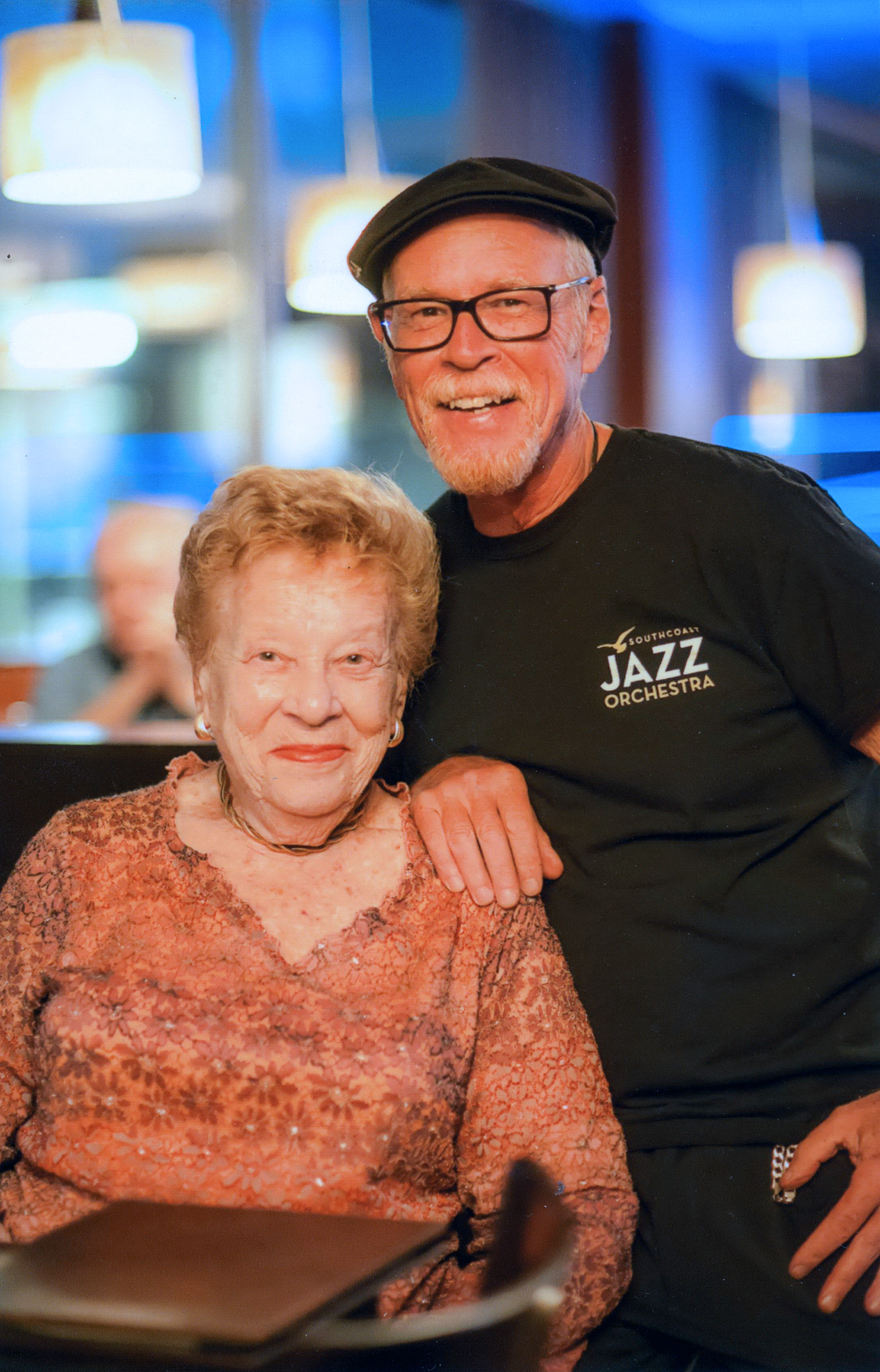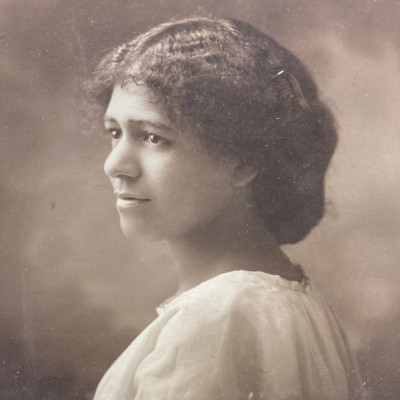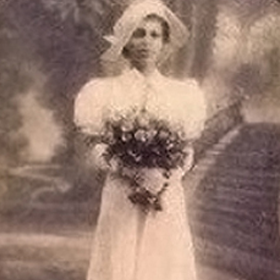She painted portraits that won awards, traveled to battlegrounds with her war correspondent husband, and was active in the women’s suffrage movement. Cecil Clark Davis (1877-1955), Marion’s most famous painter, challenged traditional gender roles as she remained true to herself and ahead of her time.
Cecil was born in Chicago in 1877 to wealthy Chicago industrialist John Marshall Clark and his wife Louise, a concert pianist. The Clark family summered in Marion, staying first at the Sippican Hotel, then eventually building a 23-room cottage on 14 acres on Water Street. They named it “The House in the Lane.” In both Chicago and Marion, Cecil was surrounded by some of the period’s most brilliant artists, musicians, writers and thinkers. During the Gilded Age, summer visitors to Marion included actress Ethel Barrymore, educator Booker T. Washington, novelist Henry James, President and Mrs. Grover Cleveland, and illustrator Charles Dana Gibson. During those summers, she would paint with other artists at the Old Stone Studio, play tennis at the Tennis Club, and golf at the Kittansett Club. At the Sippican Hotel and Casino, Cecil played billiards regularly and once beat Willie Hoopes, a billiards world champion.
Cecil attended the Art Institute of Chicago, where she remained active and connected for most of her life. She also attended the progressive Miss Porter’s School for Girls in Farmington, Connecticut. As a member of the class of 1893 at Miss Porter’s, Cecil studied the humanities, the sciences and the arts. She also learned the importance of exercise, was very athletic, playing golf and tennis throughout much of her life. Cecil points to the Chicago World’s Fair of 1893 as the place where her dream to be a great portrait artist began. In the Art Pavilion, Cecil saw great paintings, including a Rembrandt. Cecil also visited the first ever Women’s Pavilion and heard speeches by suffragists about the rights of women, children and factory workers. In her diaries, she reveals that she wants to be an “advanced” woman and not follow the traditional path of marriage and family. Nevertheless, her mother encouraged her to consider Richard Harding Davis, a handsome writer who summered in Marion as well.
In 1898, Richard asked Cecil to marry him twice and Cecil said no to both proposals. In 1899, Cecil finally said yes to Richard’s third proposal, delivered from London by his courier with an engagement ring and a bouquet of violets. They were married in Marion at St. Gabriel’s Episcopal Chapel with a reception on the lawn of the Clark home. Although Cecil and Richard agreed to a platonic marriage–to live as brother and sister–they shared worldwide adventures that included travel to Europe, Africa, Cuba, Panama, Venezuela and Japan. Cecil accompanied Richard on his assignment to cover the Boer War in Africa, where they were allowed to go to the front to experience a battle. Their worldwide travels gave Cecil access to international art and artists. At elegant dinner parties, Cecil stayed with the men to smoke when the women traditionally left the dining room. Wanting a permanent home, Cecil and Richard designed and moved into their dream house on 204 acres in Mt. Kisco, New York. At one point, Richard had four plays on Broadway all at once, while Cecil painted in her studio each day. As Richard enjoyed the night life in the city while Cecil preferred to stay home or in Marion, they grew apart. In 1908, on the day after Christmas, Richard asked for a divorce in the midst of a scandal with a chorus girl. On June 17, 1912, a decade before American women could vote, the divorce was granted. Cecil and Richard remained close friends for years.
After her separation from Richard, Cecil threw herself into her painting as well as the women’s movement. In 1910, her portraits were gaining recognition and she received her first major commission, from Town & Country magazine, for a series of portraits of influential people, including Puccini and Alexander Graham Bell. The subjects of her portraits ranged from society people and the historically important to the unassuming gardener and nurses. Cecil’s paintings won several awards, including the Portrait Prize of the Municipal Art League of Chicago in 1918, the Gold Medal of the Salon in Rio de Janeiro in 1920, the Gold Medal of the Philadelphia Art Club in 1925, the Portrait Prize of the National Association of Women Painters and Sculptors in 1926, the Popular Prize of the Newport Art Association in 1932, and the Portrait Prize of the Art Institute of Chicago in 1934. She was represented by Grand Central Studios in New York, maintained studios worldwide, and “had more commissions than I could handle.” From 1911 through 1916, Cecil attended suffrage meetings, lectures on feminism, dinners for the suffrage cause, and suffrage parades. She worked on a suffrage cartoon, designed a poster for a suffrage parade, and called legislators.
Cecil described herself as self-taught, and her diaries show that she constantly worked at improving herself. Her independent study included countless visits to museums and an extensive art book collection. She befriended John Singer Sargent, sought his advice, and appreciated his honesty.
For the last several years of her life, Cecil suffered from paralysis and debilitating pain. She hired Frederica Dibblee Poett, the daughter of a friend, to assist her in getting around and running the household in Marion. She died on September 12, 1955, and is buried in Evergreen Cemetery next to her parents in Marion. Cecil left “The House in the Lane” to Frederica and the contents of her studio, including many portraits, to a local private school, Tabor Academy. The Marion Art Center owns many of Cecil’s paintings and named one of its two galleries in her honor.
Ann O’Leary, Emily Bourne Research Fellow
| In 2020, we asked local students to tell the stories of civically engaged women from the Lighting the Way project through videos—including Cecil Clark Davis. |
Information from
-
Bidstrup, Wendy Todd. Cecil Clark Davis: A Self Portrait (1877-1955). Wendy Todd Bidstrup, 2013.
-
Rosbe, Judith Westland. Marion Art Center. Arcadia, 2007.
![Clark Davis, Cecil, “[Cecil Clark Davis self portrait]”, 1911, Painting, Courtesy of Marion Art Center. Clark Davis, Cecil, “[Cecil Clark Davis self portrait]”, 1911, Painting, Courtesy of Marion Art Center.](https://historicwomensouthcoast.org/wp-content/uploads/2017/11/Cecil-Clark-Davis-Self-Portrait-1-384x384.jpg)




